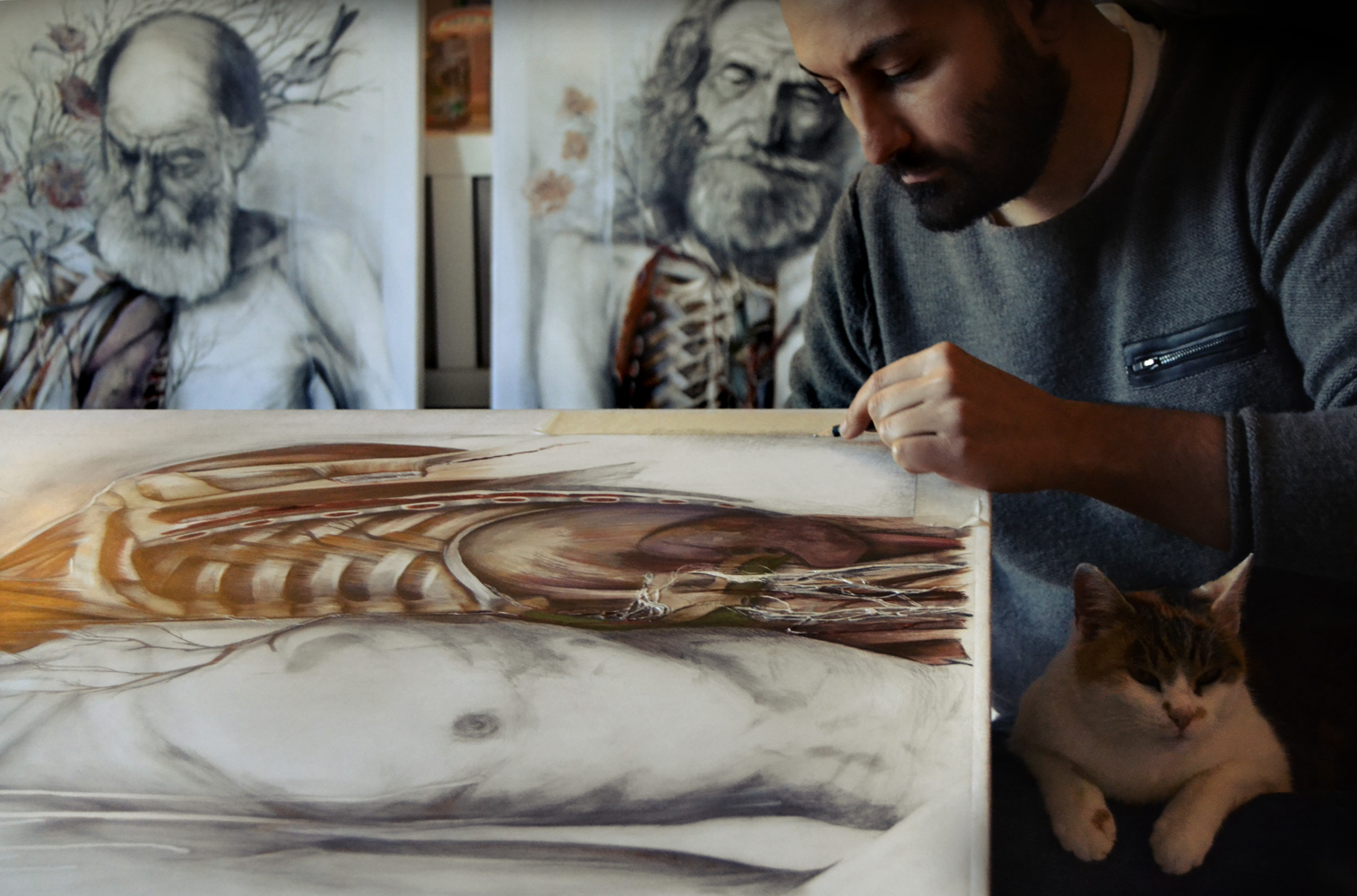After three years of negotiating with the New York State Office of Parks and Recreation, there’s a “mysterious” new constellation in the sky. Melissa McGill’s minimalist installation Constellation, is comprised of 17 LED lights perched atop 40 – 80 foot poles, and is now occupying Pollepel Island, a small landform located in the Hudson River in New York.
McGill was drawn to the island in part because of its diverse history. The island has hosted a barrage of characters and served numerous functions, including a shelter for prostitutes and a hiding place for early Anglo settlers. The most poignant remnant of this colorful history is a half exploded castle built at the turn of the 20th century by Francis Bannerman, a munitions tycoon who stocked the structure with weapons. The team planted the towering poles around the ruin so that they “reference the lines of the castle,” said McGill in her artist statement.
The island and castle are visible for a split-second to Metro North train passengers, giving birth to “train lore,” where passengers are compelled to lean over their seats in order to speculate about the landmass together. This activity breeds rumors, and heightens the mystery. This phenomenon inspired McGill to explore the divide between fantasy and reality, or truth and its absence.
“My work explores the space between absence and presence, bringing light to the overlooked, hidden, or lost aspects of architecture, found objects and places,” McGill explained in an INTERVIEW.
Each night, the LED lights slowly increase in brightness over the course of fifteen minutes as the sun goes down. Constellation is notably subtle, especially considering the arduous process undertaken to get this piece off the ground (literally). The $650,000 budget was cobbled together with various grants, including a generous $20,000 donation from the National Endowment for the Arts, local support, and an Indiegogo crowdfunding campaign. The lights glow as opposed to shine, a marked attempt to imitate nature and blend into the sky-scape.
Constellation will be on view for the next two years, and can be viewed from select Metro North lines, boat, and neighboring highways.









